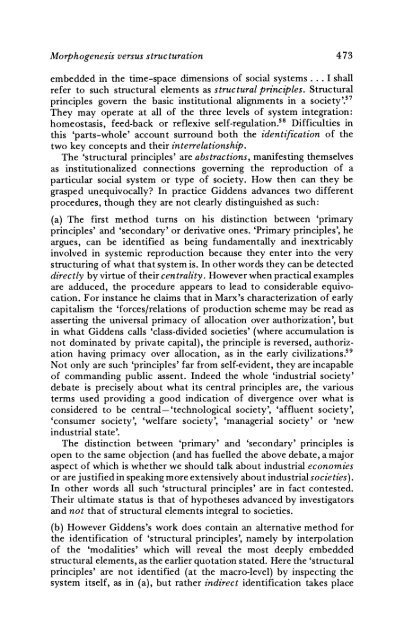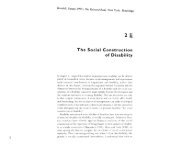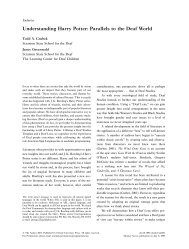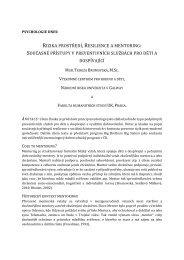Morphogenesis versus Structuration: On Combining ... - Moodle
Morphogenesis versus Structuration: On Combining ... - Moodle
Morphogenesis versus Structuration: On Combining ... - Moodle
Create successful ePaper yourself
Turn your PDF publications into a flip-book with our unique Google optimized e-Paper software.
<strong>Morphogenesis</strong> <strong>versus</strong> structuration 473<br />
embedded in the time-space dimensions of social systems . . . I shall<br />
refer to such structural elements as structural principles. Structural<br />
principles govern the basic institutional alignments in a society'.S7<br />
They may operate at all of the three levels of system integration:<br />
homeostasis, feed-back or reflexive self-regulation.58 Difficulties in<br />
this 'parts-whole' account surround both the identification of the<br />
two key concepts and their interrelationship.<br />
The 'structural principles' are abstractions, manifesting themselves<br />
as institutionalized connections governing the reproduction of a<br />
particular social system or type of society. How then can they be<br />
grasped unequivocally In practice Giddens advances two different<br />
procedures, though they are not clearly distinguished as such:<br />
(a) The first method turns on his distinction between 'primary<br />
principles' and 'secondary' or derivative ones. 'Primary principles', he<br />
argues, can be identified as being fundamentally and inextricably<br />
involved in systemic reproduction because they enter into the very<br />
structuring of what that system is. In other words they can be detected<br />
directly by virtue of their centrality. However when practical examples<br />
are adduced, the procedure appears to lead to considerable equivocation.<br />
For instance he claims that in Marx's characterization of early<br />
capitalism the 'forces/relations of production scheme may be read as<br />
asserting the universal primacy of allocation over authorization', but<br />
in what Giddens calls 'class-divided societies' (where accumulation is<br />
not dominated by private capital), the principle is reversed, authorization<br />
having primacy over allocation, as in the early civilizations.S9<br />
Not only are such 'principles' far from self-evident, they are incapable<br />
of commanding public assent. Indeed the whole 'industrial society'<br />
debate is precisely about what its central principles are, the various<br />
terms used providing a good indication of divergence over what is<br />
considered to be central-'technological society', 'affluent society',<br />
'consumer society', 'welfare society', 'managerial society' or 'new<br />
industrial state'.<br />
The distinction between 'primary' and 'secondary' principles is<br />
open to the same objection (and has fuelled the above debate, a major<br />
aspect of which is whether we should talk about industrial economies<br />
or are justified in speaking more extensively about industrial societies).<br />
In other words all such 'structural principles' are in fact contested.<br />
Their ultimate status is that of hypotheses advanced by investigators<br />
and not that of structural elements integral to societies.<br />
(b) However Giddens's work does contain an alternative method for<br />
the identification of 'structural principles', namely by interpolation<br />
of the 'modalities' which will reveal the most deeply embedded<br />
structural elements, as the earlier quotation stated. Here the 'structural<br />
principles' are not identified (at the macro-level) by inspecting the<br />
system itself, as in (a), but rather indirect identification takes place












